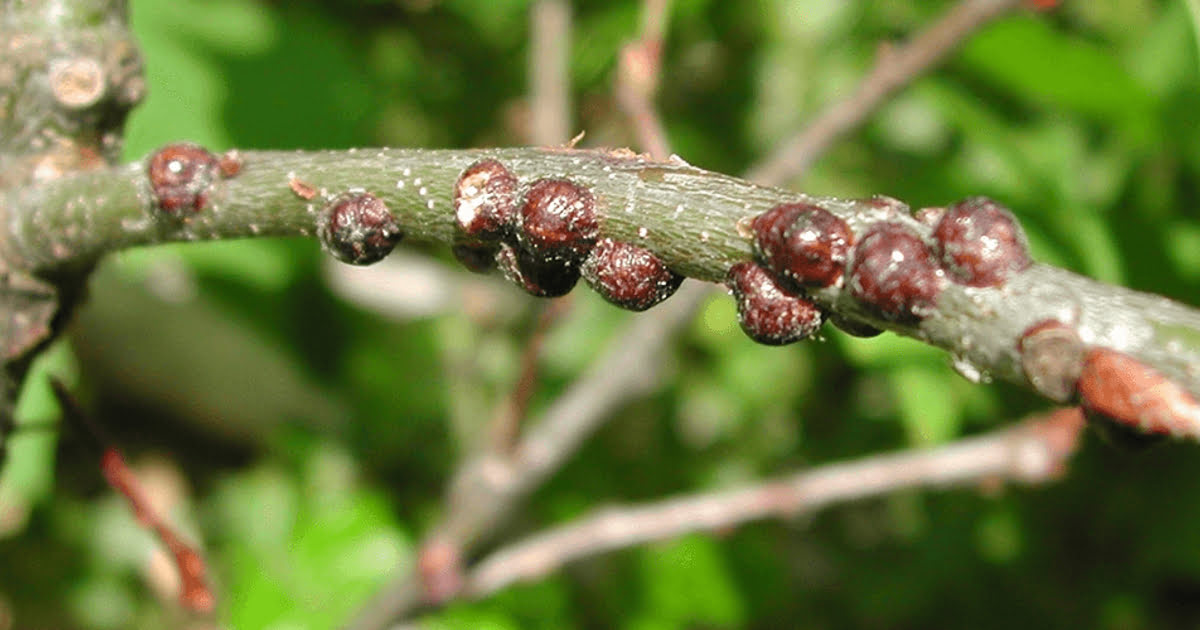Home>Gardening Basics>Understanding Soil>How Would The Nitrogen Cycle Be Disrupted If Humans Remove Nitrogen-Fixing Bacteria From The Soil?


Understanding Soil
How Would The Nitrogen Cycle Be Disrupted If Humans Remove Nitrogen-Fixing Bacteria From The Soil?
Published: February 5, 2024
Learn how the nitrogen cycle is affected when humans eliminate nitrogen-fixing bacteria from the soil. Gain a deeper understanding of soil and its crucial role in the ecosystem.
(Many of the links in this article redirect to a specific reviewed product. Your purchase of these products through affiliate links helps to generate commission for Chicagolandgardening.com, at no extra cost. Learn more)
Table of Contents
Introduction
Soil is a complex ecosystem that supports the growth of plants, serving as a vital foundation for agriculture and the sustenance of life on Earth. Within this intricate web of interactions, nitrogen-fixing bacteria play a crucial role in maintaining soil fertility and the overall health of terrestrial ecosystems. These remarkable microorganisms have the unique ability to convert atmospheric nitrogen into a form that is readily accessible to plants, a process known as nitrogen fixation.
The intricate relationship between nitrogen-fixing bacteria and soil health is a testament to the delicate balance that sustains life on our planet. As humans continue to exert their influence on the environment, it becomes imperative to understand the potential consequences of disrupting the natural processes that govern soil fertility. In this article, we will explore the significance of nitrogen-fixing bacteria in the soil, the potential disruptions to the nitrogen cycle that may arise from their removal, and strategies to mitigate these impacts. By delving into these aspects, we can gain a deeper appreciation for the intricate dynamics that underpin the health and productivity of our soil ecosystems.
The Importance of Nitrogen-Fixing Bacteria in the Soil
Nitrogen-fixing bacteria, such as Rhizobium, Azotobacter, and Frankia, play a pivotal role in the nitrogen cycle, a fundamental process that sustains the productivity of terrestrial ecosystems. These remarkable microorganisms have the unique ability to convert atmospheric nitrogen (N2) into ammonia (NH3) through a process known as nitrogen fixation. This conversion is vital because atmospheric nitrogen is abundant but not directly accessible to most organisms. By transforming nitrogen into a usable form, these bacteria facilitate the enrichment of soil with essential nutrients, particularly nitrogen, which is a primary component of amino acids, proteins, and nucleic acids.
Furthermore, nitrogen-fixing bacteria form symbiotic relationships with certain plants, such as legumes, where they reside within specialized root nodules. In return for a hospitable environment provided by the plant, these bacteria convert atmospheric nitrogen into a form that the plant can utilize for its growth and development. This mutually beneficial association not only enhances the nitrogen content of the soil but also promotes the overall health and productivity of the plant community.
Moreover, the presence of nitrogen-fixing bacteria in the soil reduces the reliance on synthetic nitrogen fertilizers, which are energy-intensive to produce and can have detrimental environmental impacts. By harnessing the natural nitrogen-fixing abilities of these bacteria, agricultural systems can reduce their dependence on chemical fertilizers, thereby promoting sustainable and environmentally friendly farming practices.
In essence, nitrogen-fixing bacteria are integral to the maintenance of soil fertility, the promotion of plant growth, and the sustainable management of agricultural ecosystems. Their ability to convert atmospheric nitrogen into a usable form represents a cornerstone of the nitrogen cycle, underscoring their indispensable role in supporting life on Earth.
Disruption of the Nitrogen Cycle
The nitrogen cycle is a complex and finely tuned process that involves the circulation and transformation of nitrogen in various forms within the soil, plants, and the atmosphere. Central to this cycle are the nitrogen-fixing bacteria, which play a pivotal role in converting atmospheric nitrogen into a form that is accessible to plants and other organisms. However, the removal or disruption of these essential microorganisms from the soil can have profound implications for the nitrogen cycle and the overall health of terrestrial ecosystems.
One of the primary consequences of disrupting the nitrogen cycle is the diminished availability of usable nitrogen in the soil. Without the active contribution of nitrogen-fixing bacteria, the replenishment of soil nitrogen would be compromised, leading to a decline in the fertility of agricultural lands and natural ecosystems. This reduction in soil nitrogen availability can directly impact plant growth and productivity, potentially resulting in decreased crop yields and diminished vegetation in natural habitats.
Furthermore, the disruption of the nitrogen cycle can lead to an imbalance in nutrient availability within the soil. Nitrogen is a critical element for the synthesis of proteins and chlorophyll in plants, and its scarcity can hinder essential physiological processes, ultimately affecting the overall health and vigor of plant communities. This imbalance can cascade through the food web, impacting the organisms that depend on plants for sustenance and further destabilizing the ecological equilibrium.
Moreover, the disruption of the nitrogen cycle can lead to an accumulation of unutilized atmospheric nitrogen, potentially contributing to environmental issues such as nitrogen pollution. This excess nitrogen can leach into water bodies, leading to eutrophication and harmful algal blooms, thereby disrupting aquatic ecosystems and posing risks to water quality and biodiversity.
In essence, the disruption of the nitrogen cycle due to the removal of nitrogen-fixing bacteria from the soil can have far-reaching consequences, affecting the fertility of agricultural lands, the health of natural ecosystems, and the delicate balance of nutrient dynamics within terrestrial and aquatic environments.
Impacts of Removing Nitrogen-Fixing Bacteria from the Soil
The removal of nitrogen-fixing bacteria from the soil can have profound and multifaceted impacts on soil fertility, agricultural productivity, and the overall health of terrestrial ecosystems. These impacts reverberate through the intricate web of ecological interactions, influencing the availability of essential nutrients, the resilience of plant communities, and the sustainability of agricultural practices.
One of the primary impacts of removing nitrogen-fixing bacteria from the soil is the diminished availability of fixed nitrogen for plant uptake. As a result, plants may experience nitrogen deficiency, leading to stunted growth, reduced vigor, and diminished yields in agricultural settings. This can have direct repercussions on food production and the livelihoods of farmers who rely on healthy, productive crops for sustenance and economic stability.
Furthermore, the removal of nitrogen-fixing bacteria can disrupt the natural balance of nitrogen within the soil, potentially leading to an accumulation of unutilized atmospheric nitrogen. This excess nitrogen can contribute to environmental issues such as nitrogen pollution, as it may leach into water bodies, leading to eutrophication and the degradation of aquatic ecosystems. The resulting impacts on water quality, biodiversity, and ecosystem resilience can be far-reaching, affecting both terrestrial and aquatic environments.
Additionally, the removal of nitrogen-fixing bacteria can exacerbate the reliance on synthetic nitrogen fertilizers in agricultural systems. This increased dependence on chemical fertilizers not only incurs higher production costs but also poses environmental risks, including soil degradation, water contamination, and greenhouse gas emissions associated with fertilizer manufacturing and application.
Moreover, the absence of nitrogen-fixing bacteria can disrupt the symbiotic relationships that these microorganisms form with certain plants, such as legumes. This disruption can hinder the natural processes of nitrogen fixation and nutrient cycling, impacting the overall health and diversity of plant communities and the stability of agroecosystems.
Overall, the removal of nitrogen-fixing bacteria from the soil can have far-reaching impacts on agricultural sustainability, ecosystem health, and environmental quality. Recognizing and mitigating these impacts is essential for promoting the resilience and productivity of soil ecosystems and the well-being of human and non-human communities that depend on them.
Strategies to Mitigate the Disruption of the Nitrogen Cycle
Addressing the potential disruption of the nitrogen cycle resulting from the removal of nitrogen-fixing bacteria from the soil requires proactive and strategic interventions aimed at restoring soil fertility, promoting sustainable agricultural practices, and safeguarding ecosystem health. Implementing targeted strategies to mitigate these disruptions is essential for maintaining the balance of nutrient dynamics and preserving the resilience of terrestrial ecosystems.
- Biological Inoculants: Introducing nitrogen-fixing bacteria, either through commercial inoculants or by promoting the proliferation of indigenous beneficial microorganisms, can help restore the natural processes of nitrogen fixation in the soil. By facilitating the re-establishment of these symbiotic relationships with plants, biological inoculants can enhance soil fertility and promote the sustainable management of agricultural lands.
- Crop Rotation and Diversification: Implementing diverse cropping systems that incorporate nitrogen-fixing legumes into rotation schedules can help replenish soil nitrogen levels and reduce the reliance on external inputs. By diversifying plant species and fostering beneficial interactions within agroecosystems, crop rotation contributes to the restoration of soil health and the mitigation of nitrogen cycle disruptions.
- Agroforestry and Intercropping: Integrating trees, shrubs, or nitrogen-fixing cover crops into agricultural landscapes through agroforestry and intercropping practices can enhance nitrogen cycling, improve soil structure, and promote biodiversity. These agroecological approaches not only mitigate the disruptions to the nitrogen cycle but also contribute to the conservation of natural resources and the provision of ecosystem services.
- Reduced Reliance on Chemical Fertilizers: Encouraging the judicious use of synthetic nitrogen fertilizers and promoting alternative nutrient management practices, such as organic amendments and compost application, can help reduce the environmental impacts associated with excessive fertilizer use. By minimizing the reliance on chemical inputs, agricultural systems can mitigate disruptions to the nitrogen cycle and foster sustainable soil management practices.
- Soil Conservation and Restoration: Implementing soil conservation practices, such as reduced tillage and the restoration of degraded lands, can contribute to the preservation of soil structure, microbial diversity, and nutrient cycling processes. These efforts help mitigate disruptions to the nitrogen cycle by promoting the retention of essential nutrients and the enhancement of soil resilience.
By embracing these and other innovative strategies, stakeholders in agriculture, land management, and environmental conservation can work collaboratively to mitigate the disruptions to the nitrogen cycle and foster the sustainable stewardship of soil ecosystems. Through proactive interventions and holistic approaches, it is possible to restore the balance of nitrogen dynamics, promote ecosystem health, and ensure the long-term productivity of agricultural lands.
Conclusion
The intricate interplay between nitrogen-fixing bacteria and the nitrogen cycle underscores the critical importance of these microorganisms in maintaining soil fertility, supporting plant growth, and sustaining the productivity of terrestrial ecosystems. The potential disruption or removal of nitrogen-fixing bacteria from the soil poses significant challenges to agricultural sustainability, ecosystem resilience, and environmental quality. The impacts of such disruptions encompass diminished soil fertility, reduced agricultural productivity, and the destabilization of nutrient dynamics within terrestrial and aquatic environments.
However, proactive measures and strategic interventions offer pathways to mitigate the potential disruptions to the nitrogen cycle. By embracing biological inoculants, promoting diverse cropping systems, integrating agroforestry and intercropping practices, reducing reliance on chemical fertilizers, and implementing soil conservation and restoration efforts, stakeholders can work collaboratively to restore the balance of nitrogen dynamics and promote the sustainable stewardship of soil ecosystems. These strategies not only address the potential disruptions resulting from the removal of nitrogen-fixing bacteria but also contribute to the conservation of natural resources, the enhancement of ecosystem services, and the resilience of agricultural and ecological systems.
As we navigate the complexities of managing soil fertility and ecosystem health, it becomes imperative to recognize the pivotal role of nitrogen-fixing bacteria and their symbiotic relationships with plants. By safeguarding the contributions of these beneficial microorganisms and implementing holistic approaches to soil management, we can uphold the integrity of the nitrogen cycle, foster sustainable agricultural practices, and preserve the vitality of terrestrial ecosystems for future generations.
In essence, the preservation of nitrogen-fixing bacteria in the soil is not only a testament to our commitment to environmental stewardship but also a fundamental necessity for sustaining the interconnected web of life that relies on the delicate balance of nutrient dynamics within the soil.





